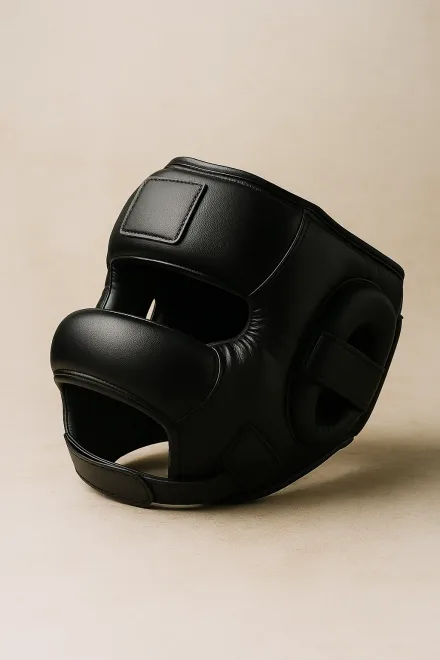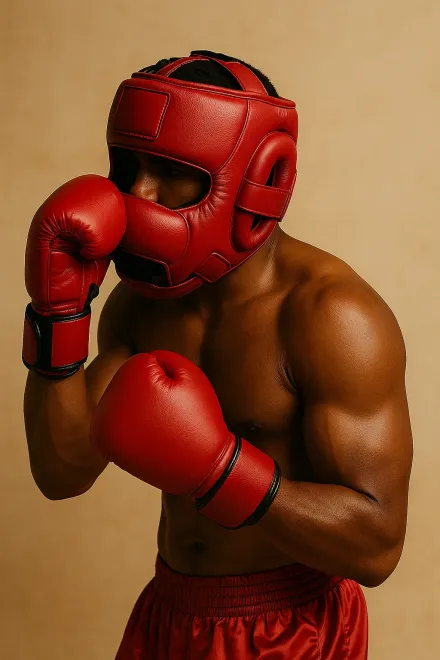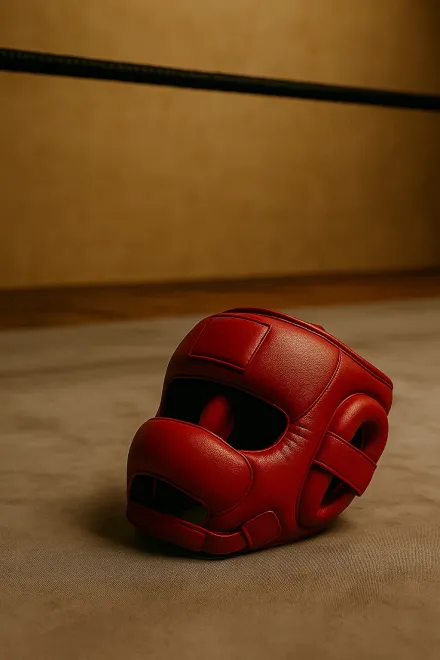Boxing headgear with bar
Boxing headgear with bar has become one of the best choices for those seeking maximum protection during intensive training or sparring. Unlike traditional headgear, this model includes a front bar that protects the nose and mouth, reducing the risk of serious facial injuries. It is highly valued by boxers, martial artists, and coaches who prioritize safety without sacrificing comfort and visibility. In this guide we will analyze its features, advantages, buying recommendations, and practical tips to get the most out of it.
See boxing headgear with bar on Amazon
What is boxing headgear with bar and what is it for?
Headgear with bar is protective equipment specifically designed to cover the athlete's head, jaw, and face during training or competition. Its distinctive feature is a metal or reinforced polymer bar that spans the front area, protecting the nose and mouth from direct impacts. This notably reduces the risk of nasal fractures, lip cuts, or dental injuries, which are common in combat sports.
This type of headgear is widely used in boxing sparring, mixed martial arts, muay thai, and kickboxing, since it allows realistic-intensity training while minimizing severe injuries. Although it is less common in official competitions—where open headgear is usually required—it is an essential tool in gyms and practice sessions.
In short, a bar headgear not only provides physical protection but also boosts the athlete's confidence, allowing them to train with greater safety and focus.
Advantages of using boxing headgear with bar
Choosing a bar headgear offers multiple benefits over conventional models. Here are the main advantages:
- Full-face protection: prevents direct blows to the nose, mouth, and jaw—very vulnerable areas.
- Better dental safety: although a mouthguard is recommended, the bar reduces the likelihood of damage to teeth and gums.
- Ideal for beginners: newcomers can train with less fear of heavy shots to the face.
- Fewer cuts and bruises: minimizes direct glove impact and protects against superficial injuries.
- Durability: often made with high-resistance synthetic or genuine leather and coated metal bars, ensuring a long lifespan.
In conclusion, boxing headgear with bar is a worthwhile investment for any practitioner who wants to protect their physical integrity without lowering training intensity.


How to choose the best boxing headgear with bar
When buying bar headgear, evaluate certain aspects to ensure it meets your needs:
- Materials: choose headgear made of high-resistance synthetic or genuine leather. The bar should be steel, aluminum, or reinforced polymer for maximum safety.
- Visibility: while the bar protects, it shouldn't overly limit your field of view. Testing before purchase or reading user reviews is essential.
- Fit: headgear with hook-and-loop straps and buckles allows a firm fit. Avoid overly loose models.
- Weight: seek a balance between lightness and sturdiness. Excess weight can fatigue the neck during long sessions.
- Ventilation and comfort: the interior should feature breathable, comfortable padding to prevent excessive sweating.
Comparing different brands and models will help you find the ideal bar headgear for your experience level, budget, and specific needs.
Usage and maintenance tips for bar headgear
A boxing headgear with bar can last many years with proper care. Here are practical tips to make the most of your investment:
- Regular cleaning: after each session, wipe the surface with a damp cloth to remove sweat and bacteria. Avoid abrasive products that could damage the material.
- Proper drying: never store the headgear damp in your gym bag. Air it out in a ventilated place to prevent odors and mildew.
- Sharing: sharing headgear isn't recommended for hygiene reasons and because each user molds it to their head shape.
- Periodic checks: ensure the bar and stitching are in good condition. If you notice excessive wear, it's time to replace it.
- Mouthguard compatibility: although bar headgear protects a lot, it never replaces a mouthguard.
With these care habits, you'll keep your headgear in top condition and ensure safer, longer training.
Who should use boxing headgear with bar?
Bar headgear is ideal for a wide range of practitioners and training situations. Those who benefit most include:
- Beginners: newcomers tend to have less control and take more shots; a bar headgear provides extra safety.
- Sparring boxers: amateurs and pros training with heavy contact use it to avoid facial injuries.
- Athletes in recovery: those coming back from nasal fractures, cuts, or dental issues can train without added risk.
- Coaches: many coaches wear bar headgear when doing mitts or practice drills with students.
- Mixed martial arts: its use goes beyond boxing; it's popular in kickboxing, muay thai, and MMA.
In summary, any athlete seeking superior protection will find bar headgear a safe, comfortable, and practical option.
Frequently asked questions about boxing headgear with bar
Do boxing headgear with bar reduce the risk of facial injuries?
Yes. One of the main benefits of bar headgear is added protection for the nose, mouth, and jaw. The front bar acts as a shield against direct blows, reducing the risk of nasal fractures, lip cuts, and dental damage. While they don't eliminate risk entirely, they significantly lower the chance of severe facial injuries.
Can bar headgear be used in official competitions?
In most official amateur and professional boxing competitions, bar headgear isn't allowed, as open models that don't obstruct vision are usually required. However, they are widely used in training, sparring, and intense practice sessions. Before a tournament, review the rules of the relevant federation.
Does the bar headgear affect visibility during a bout?
Visibility can be slightly reduced, especially in models with thick or poorly designed bars. Quality brands work to balance safety with a wide field of view. It's best to try different models to find one that suits your training style without limiting ring performance.
What's the difference between bar headgear and a conventional one?
Conventional headgear protects the head and sometimes the cheekbones but leaves the nose and mouth more exposed. Bar headgear adds a front reinforcement that covers these areas, offering superior protection. The main difference is facial safety, though it also brings a slight weight increase and a small adjustment in visibility.
Is bar headgear recommended for beginners?
Yes, especially for those just starting combat sports. Beginners tend to take more shots to the face and haven't yet mastered defense, so a bar headgear gives them greater safety. It also reduces fear of impact, which supports faster, more confident learning.
How do I care for bar headgear to extend its lifespan?
To keep headgear in good condition, clean it after each use with a damp cloth, let it dry in a ventilated place, and avoid storing it damp in your bag. Also check the bar, seams, and padding regularly. With this care, the headgear can last many years in optimal shape.
Does a bar headgear replace a mouthguard?
No. Although the front bar protects against direct impacts to the mouth, it never replaces a mouthguard. A mouthguard is essential to absorb internal impacts and prevent injuries to teeth and gums. The best practice is to combine both protections for maximum safety during training.
